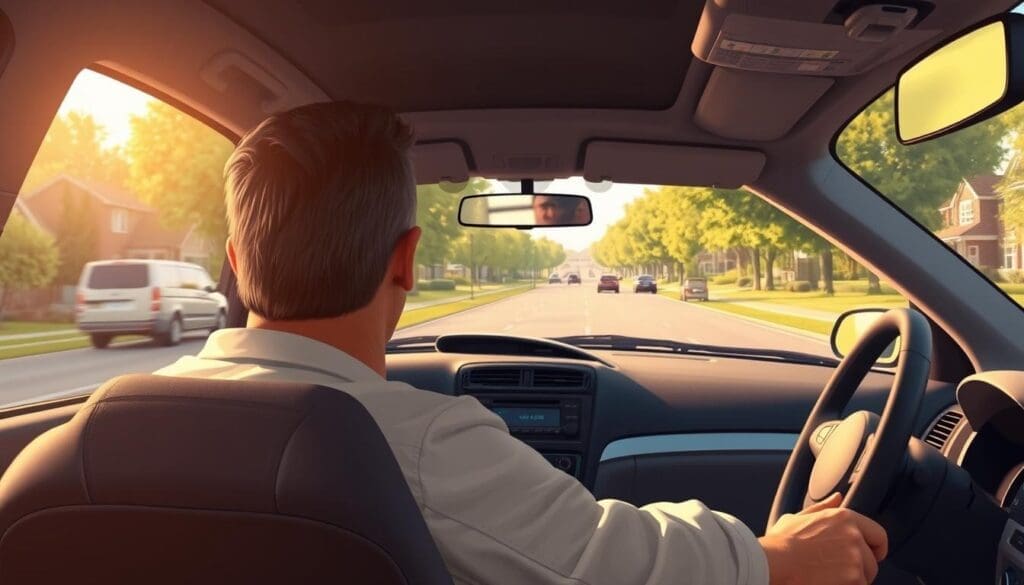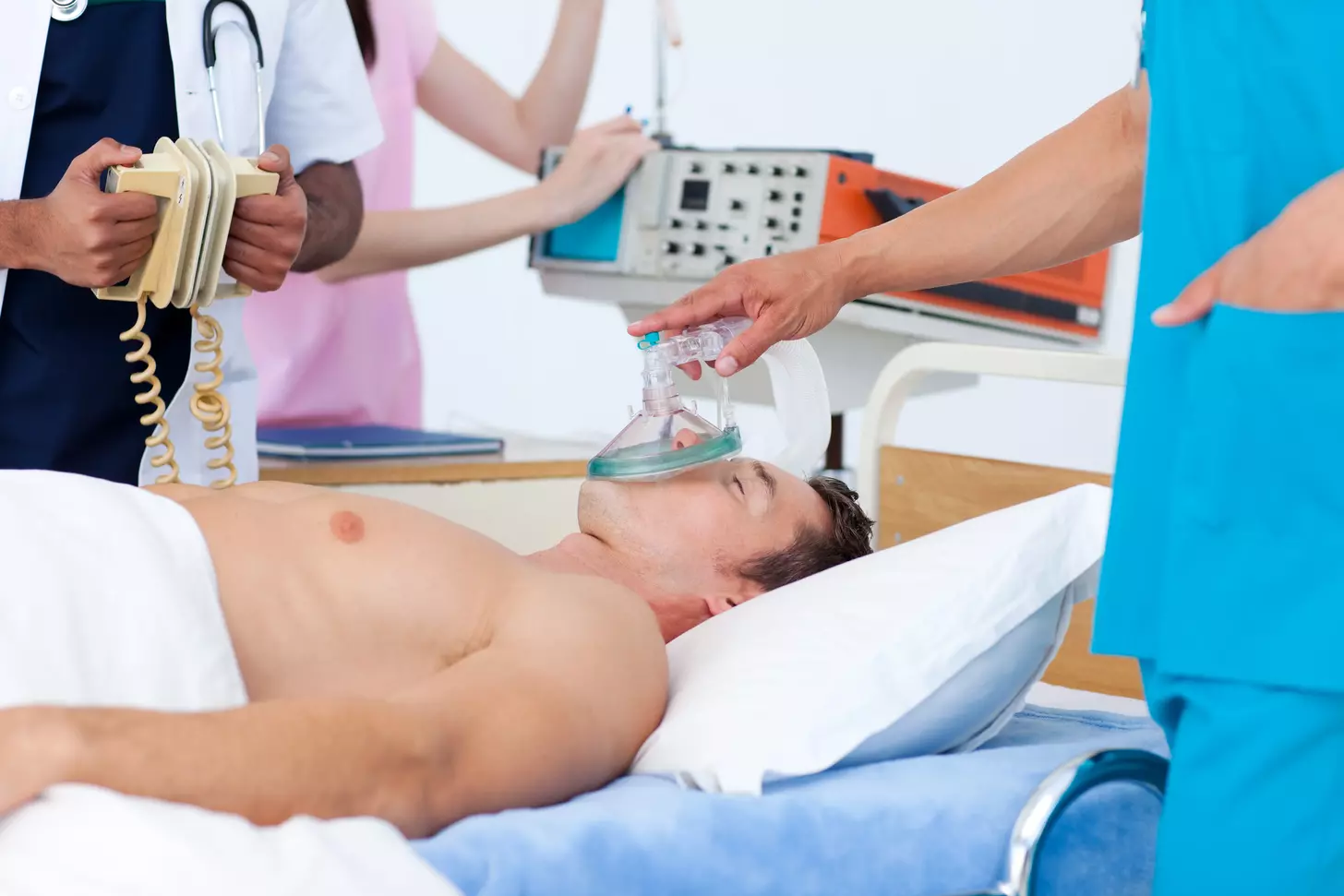Last Updated on November 26, 2025 by Bilal Hasdemir

Many patients worry about getting back to normal after a heart attack. At Liv Hospital, we get it. We balance caution with the need to get back to daily life, like driving. How soon can you drive after heart attack and stent? Get the official expert guidelines for returning to the road safely.
Usually, doctors say to wait at least 1 week to drive after a heart attack and a stent. But, this time can change based on your health and the heart procedure details.
Medical clearance is key before you start driving again. We stress the need to follow safe driving rules after a heart attack and a stent. This keeps you and others safe on the road.
Key Takeaways
- Wait at least 1 week before driving after an uncomplicated heart attack and stent placement.
- Individual health conditions and procedure specifics can affect the waiting period.
- Medical clearance is essential before resuming driving.
- Follow guidelines for driving after a heart attack to ensure safety.
- Car travel after angioplasty requires careful consideration and medical advice.
Understanding Heart Attacks and Stent Procedures

It’s key to know what happens in a heart attack and the stent placement that follows. A heart attack, or myocardial infarction, happens when blood flow to the heart is severely blocked. This damage to the heart muscle is serious.
What Happens During a Heart Attack
When a heart attack occurs, the heart muscle doesn’t get enough oxygen and nutrients. This lack of blood flow can cause chest pain and shortness of breath. If not treated quickly, it can harm the heart muscle permanently.
The Purpose and Process of Stent Placement
Stent placement is a procedure to open blocked arteries. It helps restore blood flow to the heart. A small mesh tube (stent) is placed in the artery to keep it open.
The steps include:
- Insertion of a catheter into the blocked artery
- Inflation of a balloon to open the artery
- Placement of a stent to keep the artery open
Initial Recovery Expectations
After a heart attack and stent placement, recovery is important. Patients are watched in the hospital for a few days. This ensures there are no complications.
- Rest and limited physical activity
- Monitoring of vital signs and heart function
- Adjustment of medications to manage heart health
Following the doctor’s advice and attending follow-up appointments is vital for a smooth recovery.
General Timeline for Returning to Driving
The time it takes to start driving again after a heart event changes for everyone. It depends on the person and the surgery’s complexity. Some might drive sooner, while others need more time.
Standard Waiting Period After Uncomplicated Procedures
After a simple stent placement, most doctors say to wait at least a week. This lets the body start healing and checks how well the patient is doing. They watch for any problems and how the patient reacts to their meds.
Extended Waiting Periods for Complicated Cases
For more complex surgeries or severe heart damage, waiting longer to drive is common. This is because there’s a higher chance of issues or more recovery needed. The exact wait time depends on the patient’s health and what their doctor says.
Every person’s healing path is different. Talking to a doctor is key before getting back behind the wheel.
Factors That Influence Your Personal Timeline
Several things can affect when you can drive again, including:
- The complexity of the cardiac procedure
- Overall health and presence of other medical conditions
- Response to treatment and medication
- Presence of any complications or symptoms
Knowing these factors helps figure out when it’s safe to drive.
| Procedure Type | Typical Waiting Period | Factors Influencing Return to Driving |
| Uncomplicated Stent Placement | At least 1 week | Initial healing, medication response |
| Complicated Stent Placement or CABG | Variable, potentially several weeks | Presence of complications, overall health |
| Open Heart Surgery | Typically longer than stent placement | Extent of surgery, recovery progress |
By thinking about these points and listening to doctors, people can safely get back to driving after a heart attack and stent placement.
Medical Clearance Requirements
Getting medical clearance is key before you start driving again after a heart attack or surgery. It makes sure you can drive safely.
When You Need Your Doctor’s Approval
You need your doctor’s okay before you hit the road again. They check if it’s safe for you to drive.
Doctors usually say to wait a bit before driving. How long it depends on your health and surgery type.
What Your Cardiologist Will Evaluate
Your cardiologist will look at several things, like:
- Your heart’s current state and any symptoms
- How well the stent or other procedures worked
- How well you’re recovering
- Any medicines you’re on and their effects
Documentation You May Need
You might need to show some papers to prove you’re cleared to drive. These could be:
| Documentation Type | Description | Purpose |
| Medical Certificate | A document signed by your doctor confirming your fitness to drive | To verify your medical clearance |
| Discharge Summary | A summary of your hospital stay and treatment after your cardiac event or surgery | To provide context for your doctor’s evaluation |
| Follow-up Reports | Reports from your follow-up appointments with your cardiologist | To monitor your recovery progress |
By getting the right medical clearance and following your doctor’s advice, you can safely drive again after a heart attack or surgery.
How Soon Can You Drive After Heart Attack and Stent Placement: Detailed Guidelines
Knowing when you can drive after a heart attack and stent placement is key. Everyone recovers differently. Several factors decide when it’s safe to drive again.
First Week Post-Procedure
Most doctors say wait at least 1 week after a stent placement before driving. In the first week, focus on getting better and follow your doctor’s advice closely.
Important things to do during this time include:
- Rest and avoid hard activities
- Take your medicines as told
- Watch how your body reacts to the procedure
- Go to all follow-up appointments
Weeks 2-4 Recovery Period
By weeks 2 to 4, many people start to feel better. But, when to start driving again depends on how you’re doing, not just the time.
In weeks 2-4, you should:
- Keep an eye on your health and tell your doctor about any issues
- Slowly start doing more as your doctor says
- Know if any medicines might affect your driving
Beyond One Month
If there are complications or the procedure is complex, recovery might take longer than a month. Always follow your doctor’s advice, as they can give you specific guidance based on your situation.
A cardiologist’s opinion is very important in deciding when you can drive again. They will look at:
- How well your heart is working and your overall heart health
- If you have any symptoms that could make driving risky, like chest pain or trouble breathing
- How any medicines you’re taking might affect your driving
Signs You’re Ready to Drive Again
Before you start driving again, make sure you meet these criteria:
| Criteria | Description |
| Physical Capability | You can do all the things needed to drive without pain or discomfort. |
| Medication Stability | You’re on a steady medicine plan with no side effects that could make driving dangerous. |
| Medical Clearance | You’ve got the okay from your cardiologist or healthcare team. |
One patient said, “I was really looking forward to driving again, but I waited for my doctor’s approval. It was worth it to make sure I and others on the road were safe.”
“The key to safely getting back to driving is patience and sticking to your recovery plan. It’s not just about you; it’s also about keeping others on the road safe.”
Medical Expert in Cardiology
Physical Limitations That Affect Driving Ability
After a heart attack and stent placement, patients often face physical limits that affect driving. These limits vary in severity and duration. They depend on individual circumstances.
Chest Discomfort and Incision Healing
Chest discomfort is a big concern after a cardiac event. It can come from the procedure or the underlying condition. Driving positions or maneuvers might make it worse.
If there was an incision, healing it can also affect driving comfort. We suggest avoiding driving until the discomfort lessens and the incision heals well.
Medication Side Effects
Medications after a heart attack and stent placement can have side effects. These might include drowsiness, dizziness, or other impairments. It’s important to know your medication’s side effects and talk to your healthcare provider.
We advise patients to check how their medications affect them before driving again.
Fatigue and Concentration Issues
Fatigue is common after a cardiac event and can affect driving safety. Concentration and reaction times may also be off during recovery. We suggest checking your energy and focus before driving.
Consider taking breaks during long drives. Listen to your body and rest when needed.
Understanding and managing these physical limitations is key to safely driving again after a heart attack and stent placement. By being aware of the challenges and taking steps to mitigate them, patients can drive confidently once more.
Driving After Different Cardiac Procedures
Knowing the rules for driving after cardiac procedures is key for safety and recovery. Each cardiac intervention has its own recovery time and driving rules.
Angioplasty vs. Stent Placement
Angioplasty and stent placement are quick, non-surgical ways to improve heart blood flow. Recovery is usually short, and driving can start in a few days to a week. This depends on what your doctor says.
The recovery for angioplasty and stent placement is similar. Both use a leg or arm artery to reach the heart. But a stent might need more watchful care.
Coronary Artery Bypass Grafting (CABG)
CABG is a more serious surgery that uses a healthy blood vessel to bypass a blocked artery. It takes longer to recover from than angioplasty or stent placement.
After CABG, it’s best to avoid driving for 4-6 weeks. This lets the chest incision and sternum heal well. It also helps the body recover from the surgery.
Open Heart Surgery
Open heart surgery includes CABG, valve repairs, and more complex procedures. Recovery time varies a lot, depending on the surgery and the patient.
For most open heart surgeries, driving should wait 4 to 6 weeks. Always listen to your surgeon about when it’s okay to drive again.
Pacemaker or Defibrillator Implantation
Putting in a pacemaker or defibrillator is less invasive than open heart surgery. It’s done to control heart rhythm. But, it does need some recovery time.
Usually, you can drive again in a few days to a week after getting a pacemaker or defibrillator. But, commercial drivers might have special rules.
| Procedure | Typical Driving Ban Duration | Factors Influencing Recovery |
| Angioplasty/Stent Placement | 3-7 days | Presence of complications, overall health |
| CABG | 4-6 weeks | Sternal healing, surgical stress recovery |
| Open Heart Surgery | 4-6 weeks | Type of surgery, individual recovery pace |
| Pacemaker/Defibrillator Implantation | 3-7 days | Device functionality, absence of complications |
Always follow your doctor’s advice on driving after cardiac procedures. Your situation can affect when it’s safe to drive again.
Special Considerations for Commercial Drivers
After a heart attack and stent placement, commercial drivers face strict rules. They must ensure their safety on the road and follow federal guidelines.
Federal Motor Carrier Safety Administration Guidelines
Commercial drivers must follow the Federal Motor Carrier Safety Administration (FMCSA) rules. These rules cover medical certification and the evaluation process for drivers who have had a heart attack.
These regulations might seem tough, but they’re key for everyone’s safety. The FMCSA guidelines have specific rules for checking if a driver is fit to drive after a heart attack.
Required Medical Certifications
To keep driving commercially, drivers need a medical certification from a certified examiner on the FMCSA’s National Registry. This certification proves they can safely drive a commercial vehicle.
The medical check includes looking at the driver’s health history and current health. It also checks if they can do the tasks needed for commercial driving.
| Certification Requirement | Description | Frequency |
| Medical Examination | Comprehensive physical examination by a certified medical examiner | Every 24 months, or as specified by the medical examiner |
| Cardiac Evaluation | Detailed assessment of cardiac health post-event | As required by the FMCSA or medical examiner |
| Medical History Review | Review of the driver’s medical history, including any cardiac events | At each medical examination |
Potential Career Implications
A heart attack and stent placement can affect a commercial driver’s career. The severity of the event and the driver’s health may require a leave or changes in driving duties.
These changes can be tough for drivers, both at work and personally. It’s important for drivers to work with their doctors and follow FMCSA rules to safely get back to driving.
Key Considerations:
- Compliance with FMCSA regulations is mandatory.
- Regular medical evaluations are necessary to maintain certification.
- Drivers should be aware of the possible need for career adjustments after a cardiac event.
Resuming Other Forms of Travel
After a heart attack and stent placement, many patients wonder about traveling again. It’s important to know how different ways of getting around affect your health.
Passenger Car Travel
Traveling in a car as a passenger is usually safe soon after a heart event. But, make sure you’re comfortable and not feeling any symptoms. It’s also good to take breaks to stretch and move around. This helps prevent blood clots.
- Plan for regular stops every few hours
- Stay hydrated and avoid heavy meals during travel
- Consider having a companion who can assist if needed
Flying After Cardiac Events
Flying after a heart attack or stent placement needs extra care. Most airlines suggest waiting 2-4 weeks before flying after such events. But, this time can change based on your health and the details of your procedure.
Before flying, always get your cardiologist’s okay, even for short flights. Think about:
- The risk of deep vein thrombosis (DVT) from sitting too long
- Changes in cabin pressure that might affect your heart
- Medical care options at your destination
Public Transportation Options
Public transport like buses and trains is also a good choice after a heart event. It’s less stressful than driving and allows more movement than sitting in a car or plane.
When using public transport, consider:
- How easy it is to get to your destination
- The availability of seats and rest areas
- The chance of delays or crowded conditions
Travel Insurance Considerations
Travel insurance is key when planning to travel after a heart attack or stent placement. Many policies cover medical emergencies, trip cancellations, or interruptions. Review your policy carefully to know what’s covered and what’s not.
Look for these key points in your travel insurance policy:
| Coverage Aspect | Description |
| Medical Emergency | Covers unexpected medical expenses while traveling |
| Trip Cancellation | Reimburses you if you need to cancel your trip due to health reasons |
| Trip Interruption | Covers costs if your trip is cut short due to medical reasons |
By understanding these points and planning well, you can travel safely and enjoy your trips.
Practical Tips for a Safe Return to Driving
Returning to driving after a heart attack and stent placement is a big step. We’re here to help you through it. It’s a key part of your recovery.
Starting With Short Trips
Start with short trips around your neighborhood. This lets you see how your body handles driving. It also helps avoid getting too tired. As you get more comfortable, you can drive further.
Bringing a Companion
Having a companion on your first drives is helpful. They can support you emotionally and help in emergencies. They can also navigate and offer company.
Vehicle Modifications That May Help
Think about making vehicle modifications for better comfort and safety. Adjust your seat and steering wheel for comfort. Make sure your car has safety features like airbags and anti-lock brakes.
Emergency Preparedness While Driving
Emergency preparedness is key when driving after a heart attack. Keep a roadside emergency kit in your car. It should have a first-aid kit, phone charger, and any needed medications. Also, have a list of emergency numbers ready.
Here are more tips for safe driving:
- Stay hydrated and avoid heavy meals before driving
- Take regular breaks during long trips to stretch and move around
- Avoid driving during peak traffic hours or in heavy weather conditions
- Keep your vehicle’s maintenance up to date, including regular checks on tire pressure, oil, and brakes
By following these tips, you can safely return to driving after a heart attack and stent placement. Your safety is our main concern. We’re here to support you every step of the way.
Conclusion
Driving after a heart attack and stent placement needs careful planning. We’ve looked at what makes it safe to drive again. This includes the type of heart procedure, how fast you recover, and medical checks.
It’s key to follow advice from doctors and health groups like the American Heart Association. They give important tips to make sure driving is safe again.
Deciding when to drive again should be a doctor’s call. This way, you can stay safe and fully recover. Remember, sticking to medical advice is vital for your safety and others on the road.
FAQ
How soon can you drive after a heart attack and stent placement?
It depends on your situation. Usually, you can drive a few days to a week after a stent. This is if your doctor says it’s okay.
What factors influence the timeline for returning to driving after a cardiac procedure?
Several things matter. These include the type of procedure, your health, any complications, and your doctor’s opinion. They all play a role in when you can drive again.
How long after open heart surgery can you drive?
You might need to wait 4-6 weeks. But, your surgeon might give you different advice based on your recovery.
Can you fly after a heart attack?
It’s best to wait 2-4 weeks before flying. But, talk to your doctor first. They can give you advice based on your health.
What are the guidelines for driving after CABG (Coronary Artery Bypass Grafting)?
For CABG, you usually wait 4-6 weeks. But, your doctor will check your recovery and give you specific advice.
Are there special considerations for commercial drivers after cardiac events?
Yes, commercial drivers have to follow special rules. They need to wait longer and get certain medical certifications.
How do physical limitations affect driving ability after a cardiac procedure?
Physical issues like chest pain, medication side effects, and tiredness can make driving hard. Wait until these problems go away before driving.
What should you consider when resuming car travel after a cardiac procedure?
Start with short trips and have someone with you. Make sure your car is ready for you. Also, be ready for emergencies.
Are there travel insurance implications after a heart attack or cardiac procedure?
Yes, check your travel insurance policy. It might have rules about heart conditions or recent heart events.
How soon can you drive after stent placement?
You can drive a few days to a week after a stent. This is if your procedure was simple and your doctor says it’s okay.
What signs indicate you’re ready to drive again after a cardiac procedure?
You’re ready if you don’t have chest pain, have few medication side effects, and feel physically and mentally strong.
How long after a heart attack can you drive?
It depends on your health and the heart attack details. Usually, wait until your doctor clears you, which can be a few days or more.
Can you drive after heart bypass surgery?
It’s best to avoid driving for 4-6 weeks after bypass surgery. Or, follow your surgeon’s advice to make sure you’re fully recovered.
What are the considerations for flying after a stent placement?
Wait until your doctor says it’s safe to fly. This is usually a few days to a week. Always talk to your doctor about any flying concerns.
References
- Rassaf, T., Steiner, S., & Kelm, M. (2013). Postoperative care and follow-up after coronary stenting. Dtsch Arztebl International, 110 (5), 72-82. https://www.ncbi.nlm.nih.gov/pmc/articles/PMC3576602/
- Shroff, A., Gilchrist, I., Caputo, R., Bertrand, M., & Pancholy, S. (2016). Same-day discharge after percutaneous coronary intervention. JAMA Cardiology, 1 (3), e160141. https://jamanetwork.com/journals/jamacardiology/fullarticle/2506675






